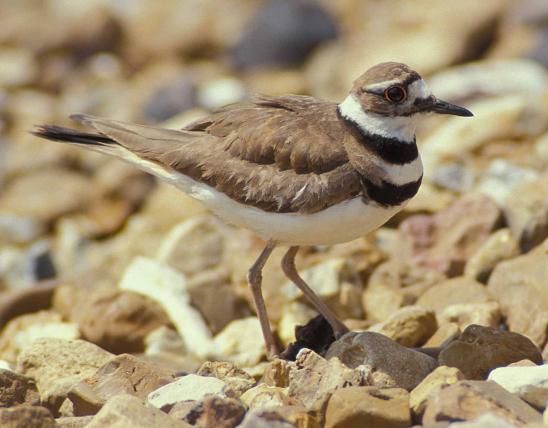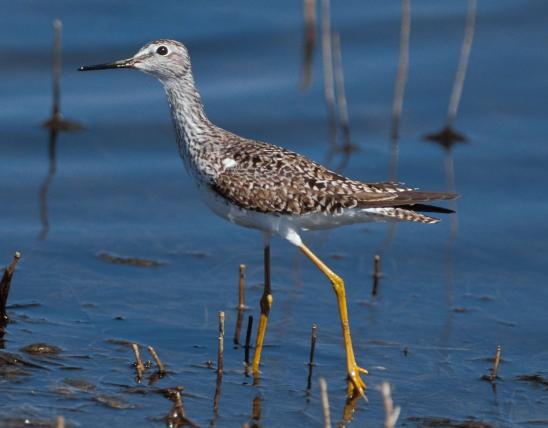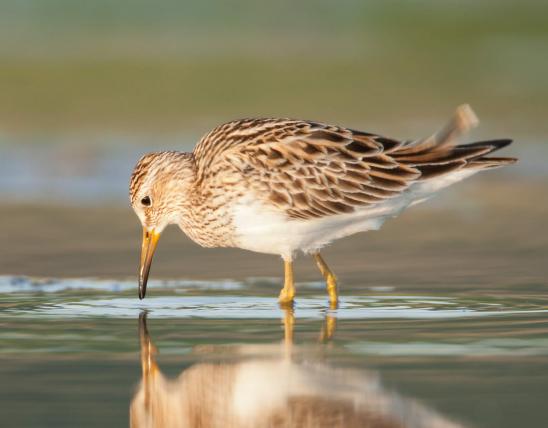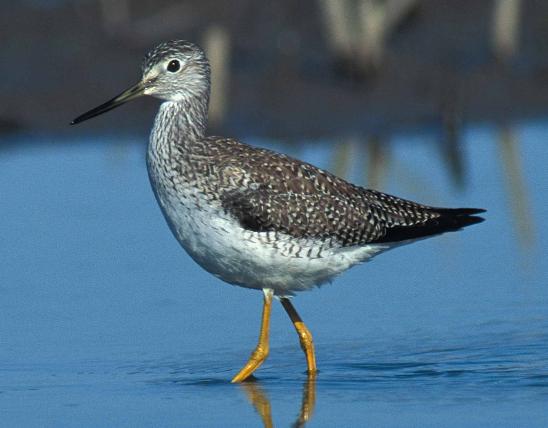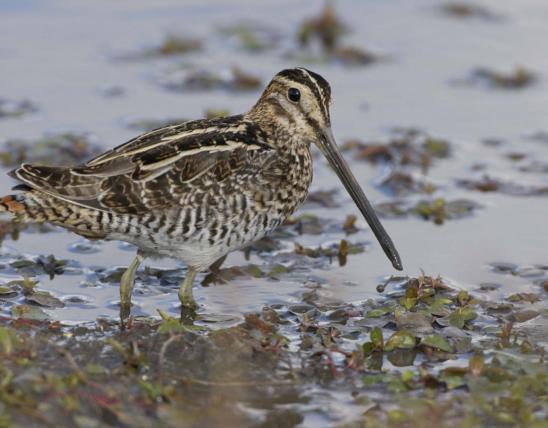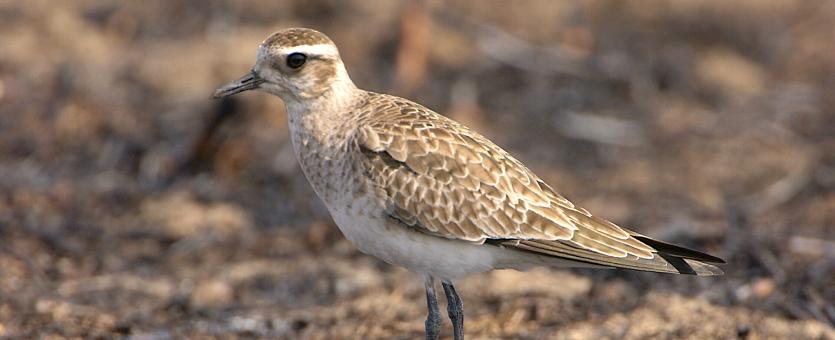
American golden-plover upperparts are speckled with black, gold, and white; the underparts are entirely black. A white stripe extends from the forehead and eyebrows along the edge of the black throat and breast. The bill is much smaller than that of the black-bellied plover. Viewed in flight, the nonbreeding plumage is mostly brownish, the wings lack a prominent white stripe, and the underwing linings are pale with no black near the body at the base of the wings. The voice is a sharp, quick, 2- or 3-syllable whistle.
Length: 10 inches (tip of bill to tip of tail).
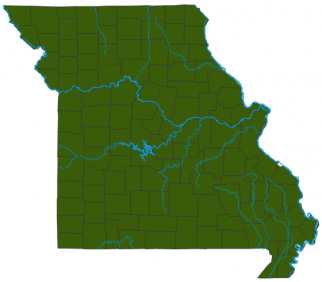
Statewide.
Habitat and Conservation
Plovers usually forage on drier parts of mudflats, plowed fields, shallow-flooded fields, or grassy areas. From a distance, the foraging behavior — running, stopping abruptly, then picking up food — is very different from that of the sandpipers and other shorebirds. In the 1800s, this species was overhunted, and the populations have never completely recovered.
Food
Forages on plowed fields, flooded row-crop stubble, grazed pastures, and muddy shorelines for worms and other invertebrates.
Status
Common early migrant. Flies through Missouri only in spring.
Life Cycle
This bird is an early migrant, initially arriving here in March as it flies through Missouri on its way north for breeding. It appears in our state just after killdeer and American woodcocks.
A ground-nester, it breeds in the Arctic tundra in northern Canada and Alaska.
In fall, it migrates thousands of miles south to overwinter in South America (where it’s summer). The adults depart southward a few weeks before the young. Amazingly, the young find their own way south.
Although golden-plovers pass through Missouri as they travel north in spring, they take a more easterly route, over the west Atlantic and Caribbean Sea, on their way south in the fall. This inspiring, robin-sized shorebird's annual odyssey from Argentina to the Arctic tundra is truly spectacular — a distance of over 20,000 miles, with about 3,000 miles of it over open water.
Human Connections
Any bird that annually flies over 20,000 miles is worthy of human admiration. There is a possibility that this might have been the species that Christopher Columbus saw as he approached the New World, alerting him he was nearing land.
Ecosystem Connections
Though it only passes through our state in spring, this bird plays an important role as an invertebrate-eating shorebird — and as a prey species — in the Arctic tundra, in its wintering grounds in the pampas of Argentina, and everyplace in between.
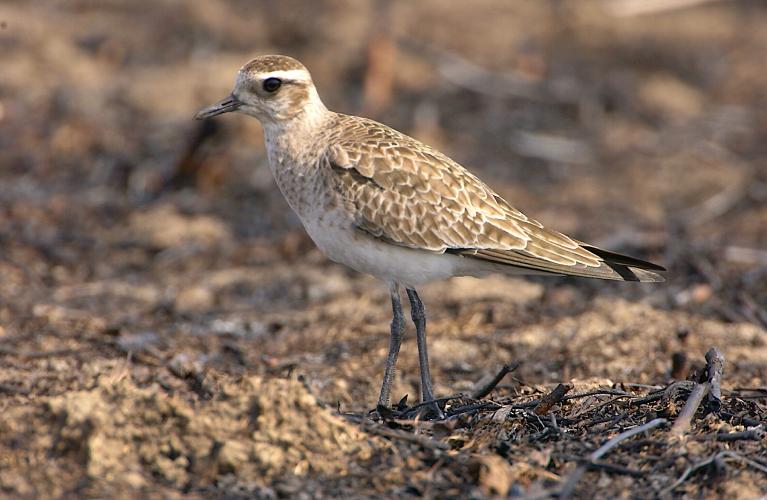
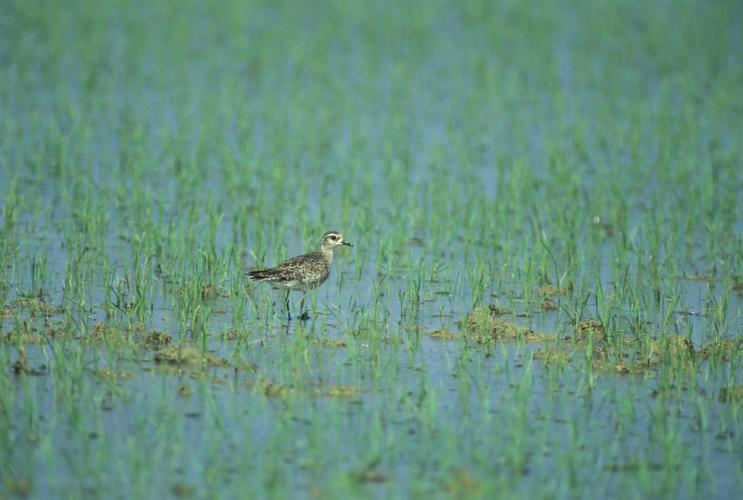
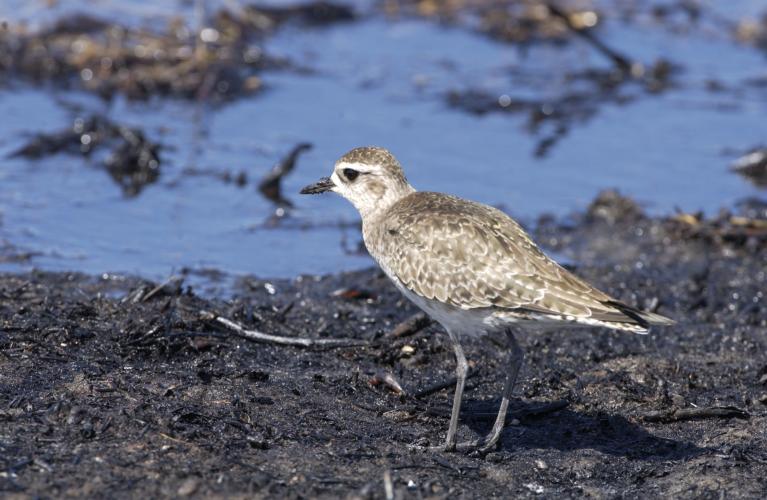
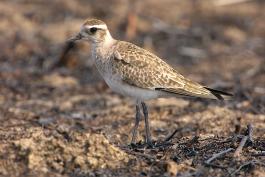
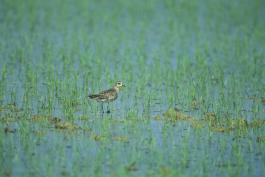
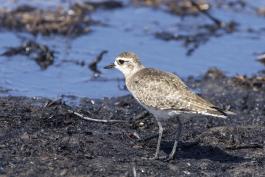
About 350 species of birds are likely to be seen in Missouri, though nearly 400 have been recorded within our borders. Most people know a bird when they see one — it has feathers, wings, and a bill. Birds are warm-blooded, and most species can fly. Many migrate hundreds or thousands of miles. Birds lay hard-shelled eggs (often in a nest), and the parents care for the young. Many communicate with songs and calls.






















